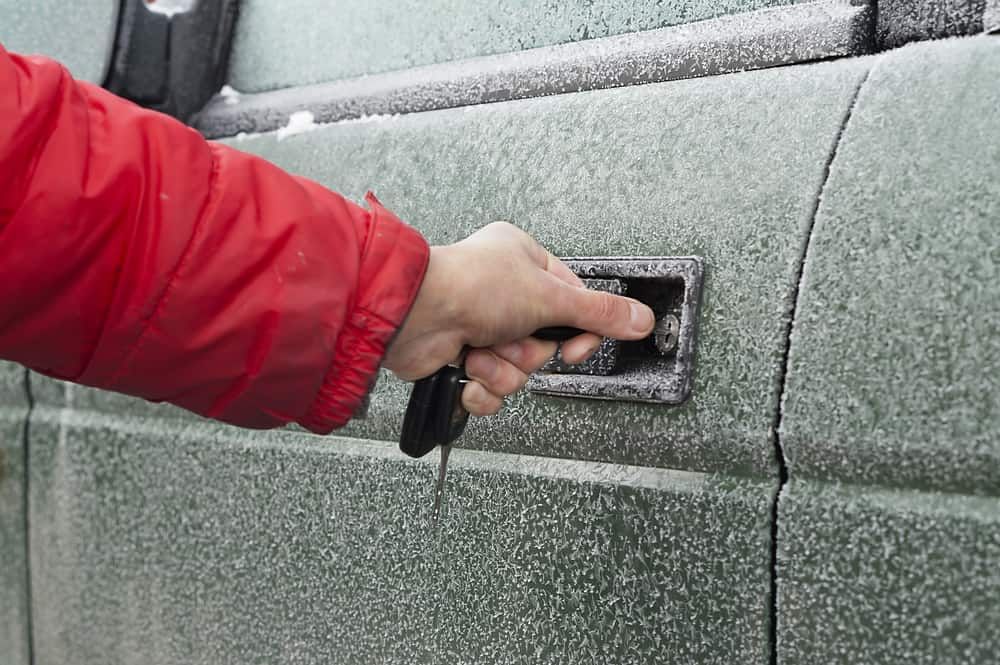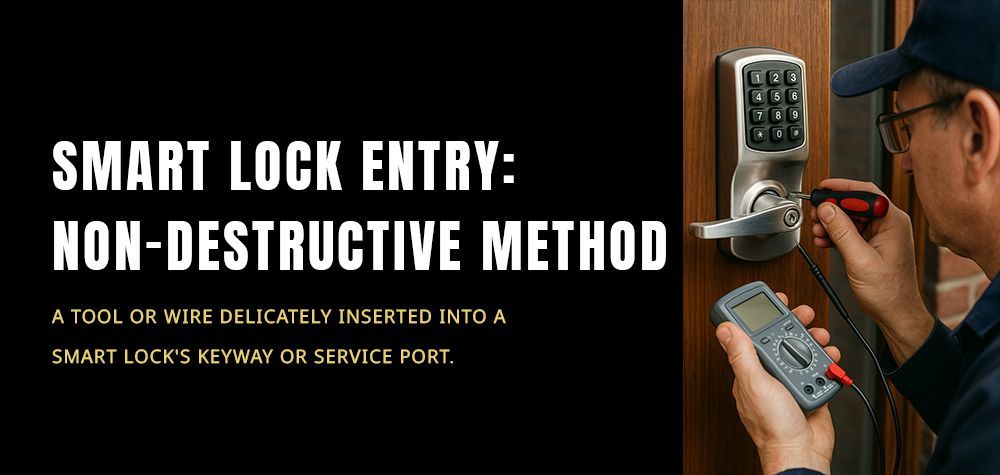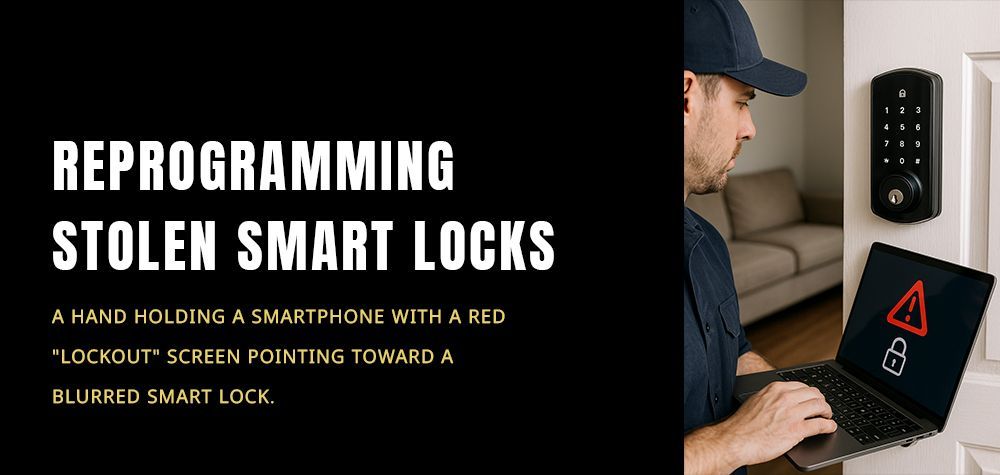How To Open A Frozen Car Door Lock
Facing a frozen car door lock can be a frustrating and inconvenient ordeal, especially when winter weather takes a harsh turn. Imagine stepping outside on a bitterly cold morning, eager to start your day, only to find your car door stubbornly frozen shut. It's a common scenario that many of us have encountered at some point, and it often leaves us feeling stuck and unsure of how to proceed.
In such moments, the key to regaining access to your vehicle lies in knowing how to open a frozen car door lock safely and effectively. This guide is here to offer practical solutions without unnecessary frills or complexity. We'll explore straightforward methods to that icy barrier and get you back on the road without causing any damage to your car or its components.
To learn how to open car door that is frozen, try using de-icer spray or applying lukewarm water to the door edges and handle.
Whether it's the result of ice forming in the lock itself, the doorframe, or the surrounding mechanism, we'll tackle the challenge head-on. From heating up your key to using de-icer or warm water, we'll walk you through the steps needed to unlock your car door and reclaim your mobility. So, let's dive in and learn how to navigate this icy obstacle together. It's time to that frozen car door lock and regain control of your journey.
Read more about Securing a door lock with traditional locks!
Understanding Frozen Door Locks
Frozen door locks can be a common nuisance during cold winter months, presenting challenges when trying to access your vehicle. Several factors contribute to the freezing of door locks, including:
- Moisture Accumulation: Moisture from rain, snow, or condensation can seep into the lock mechanism, where it freezes in low temperatures.
- Temperature Fluctuations: Rapid changes in temperature, such as when a warm car is parked in freezing conditions, can cause moisture to freeze quickly within the lock.
- Ice Formation: Ice can accumulate around the doorframe and keyhole, preventing the key from turning smoothly or inserting properly.
To effectively address frozen door locks, it's essential to understand these factors and how they contribute to the problem. By recognizing the causes of frozen locks, you can implement strategies to prevent them and safely thaw them when they occur. In the following sections, we'll explore various methods to open frozen door locks safely and regain access to your vehicle.
Preparation for Unlocking
Before attempting to unlock a frozen car door lock, proper preparation is key to ensure a successful and safe outcome. Here's what you need to do to prepare for unlocking a frozen door lock:
Assess the Situation: Start by assessing the extent of ice buildup and the condition of the lock mechanism. Note any visible ice around the doorframe, keyhole, or locking mechanism. I want you to know that understanding the severity of the situation will help you figure out the best approach for thawing the lock.
Gather Necessary Tools: Collect the tools and materials you'll need to effectively unlock the door without causing damage. This may include a heated key, de-icer spray, warm water, a hairdryer, or an ice scraper. Having these items on hand will ensure that you're prepared to tackle the frozen lock efficiently.
Exercise Patience: Opening a frozen door lock may require patience and persistence, especially if the ice buildup is substantial. Avoid rushing the process, as applying excessive force can damage the lock or surrounding areas. Instead, approach the task calmly and methodically, allowing each method to work effectively.
By preparing carefully and having the right tools at your disposal, you can increase your chances of successfully unlocking a frozen car door without causing harm to your vehicle.
Read more about Perils of broken car door!
Methods to Open a Frozen Door Lock
When faced with a frozen car door lock, it's essential to have a variety of methods at your disposal to thaw the ice and regain access to your vehicle effectively. Here are several methods, each with its own unique approach:
Hot Key Method
One effective way to unlock a frozen door lock is through the Hot Key Method:
Before attempting to open the door, heat the metal part of your key using a match or lighter.
Carefully insert the heated key into the frozen lock, allowing it to melt the ice as it makes its way through the keyhole.
Repeat the process as needed until the lock is fully thawed and the key can turn smoothly.
This method is particularly useful for older vehicles with traditional metal keys and can be a quick and straightforward solution to opening a frozen lock.
De-icer Method
Another approach to thawing a frozen door lock is through the use of a de-icer spray:
Apply a commercial de-icing fluid directly into the keyhole and around the doorframe where ice has formed.\
Allow the de-icer to penetrate the ice and dissolve it, making it easier to insert the key and unlock the door.
Repeat the application if necessary, ensuring that all areas affected by ice are adequately treated.
De-icer sprays are readily available at most auto shops and hardware stores and can be an effective solution for quickly thawing frozen locks.
Warm Water Method
The Warm Water Method is a simple yet effective way to melt ice and unlock a frozen car door:
Pour lukewarm water over the frozen door lock and surrounding areas, allowing it to melt the ice.
Gently attempt to turn the key and unlock the door, applying pressure as needed to break through any remaining ice.
Be cautious not to use hot water, as it can cause damage to the vehicle's paint or windows.
This method is particularly useful for doors with extensive ice buildup and can quickly thaw frozen locks with minimal effort.
Hot Air Method
Using a hairdryer to blow hot air onto the frozen lock is another effective way to thaw the ice:
Hold the hairdryer approximately six inches away from the lock and move it back and forth to distribute the heat evenly.
Continue blowing hot air onto the lock for several minutes, allowing the ice to melt.
Once the ice has melted, gently attempt to turn the key and unlock the door.
The Hot Air Method is ideal for situations where de-icer spray or warm water may not be readily available and can quickly thaw frozen locks using common household items.
Ice Scraper Method
For stubborn ice buildup, the Ice Scraper Method can be used to break through the ice and unlock the door:
Use an ice scraper to carefully chip away at the ice around the door lock and keyhole.
Take care not to apply too much pressure or force, as this can damage the vehicle's paint or trim.
Once the ice has been sufficiently removed, attempt to insert the key and unlock the door.
While this method may take longer than others, it can be effective for removing thick layers of ice and opening heavily frozen locks.
De-icer Method
If commercial de-icing fluid is not available, consider using household alternatives to melt the ice:
Mix equal parts rubbing alcohol and water in a spray bottle and apply it directly to the frozen lock.
Allow the mixture to penetrate the ice and dissolve it, making it easier to unlock the door.
Repeat the application as needed until the ice has melted and the lock can be opened.
Using a homemade de-icer solution can be an effective alternative when commercial products are not accessible.
By utilizing these various methods, you can effectively thaw a frozen car door lock and regain access to your vehicle, even in the most challenging winter conditions. Experiment with different techniques to find the one that works best for your specific situation, and always prioritize safety and caution when attempting to unlock frozen locks.
Read more aboutWhat to do when car won't open from inside!

Safety Considerations
When attempting to open a frozen car door lock, it's essential to prioritize safety to avoid accidents and prevent damage to your vehicle. Here are some important safety considerations to keep in mind:
Avoid Excessive Force
- Patience is Key: Applying excessive force to the key or door handle can damage the lock mechanism or surrounding areas. Avoid forcing the key or door open, as this can lead to costly repairs. To find out how to open the frozen lock, you can use methods like applying a de-icer spray, warming the key with a lighter, or using warm water to thaw the ice inside the lock.
- Gentle Pressure: Use gentle pressure when attempting to turn the key or open the door. If the key doesn't turn smoothly, try applying a lubricant or de-icer to thaw the ice before trying again.
Use Caution with Heating Devices
- Electrical Safety: When using heating devices such as hairdryers or heat guns to thaw the lock, exercise caution to avoid electrical hazards.
- Keep Dry: Ensure that your hands and the area around the lock are dry before using electrical devices to prevent electric shocks or short circuits.
Be Mindful of Surroundings
- Watch for Slippery Surfaces: In icy conditions, be mindful of slippery surfaces around the vehicle. Take caution to avoid slipping and injuring yourself while attempting to unlock the door.
- Beware of Hot Surfaces: Heating devices can become hot during use. Avoid touching hot surfaces directly to prevent burns or injuries.
Seek Professional Assistance if Necessary
- When in Doubt, Call for Help: If you're unable to unlock the door safely or encounter any difficulties, don't hesitate to seek professional assistance.
- Locksmith Services: Locksmiths have the expertise and tools to safely unlock frozen car door locks without causing damage to your vehicle.
Preventive Measures
- Prepare in Advance: Keep de-icer spray, a heated key, or other thawing tools in your vehicle during winter months to be prepared for frozen locks.
- Regular Maintenance: Maintain your vehicle's door locks by periodically lubricating them with graphite or silicone lubricants to prevent freezing.
By following these safety considerations, you can effectively open a frozen car door lock while minimizing the risk of accidents or damage to your vehicle. Remember to stay calm, be patient, and prioritize safety at all times when dealing with frozen locks in winter conditions.
Conclusion:
In conclusion, dealing with a frozen car door lock can be a frustrating experience, especially during cold winter weather. However, with the right knowledge and tools at your disposal, you can safely and effectively thaw the ice and regain access to your vehicle.
Throughout this guide, we've explored various methods for opening a frozen door lock, from heating the key to using de-icer spray or warm water. Each method has its own advantages and considerations, but all share the common goal of safely unlocking the door without causing damage.
We've also discussed important safety considerations to keep in mind, such as avoiding excessive force, using caution with heating devices, and being mindful of your surroundings. Prioritizing safety is essential to prevent accidents and ensure a successful outcome.
By following the tips and techniques outlined in this guide, you can confidently tackle frozen car door locks and navigate through winter weather with ease. Remember to stay prepared, exercise patience, and prioritize safety at all times.
Thank you for reading, and we wish you safe travels throughout the winter season and beyond.
Call Us Any Time!






